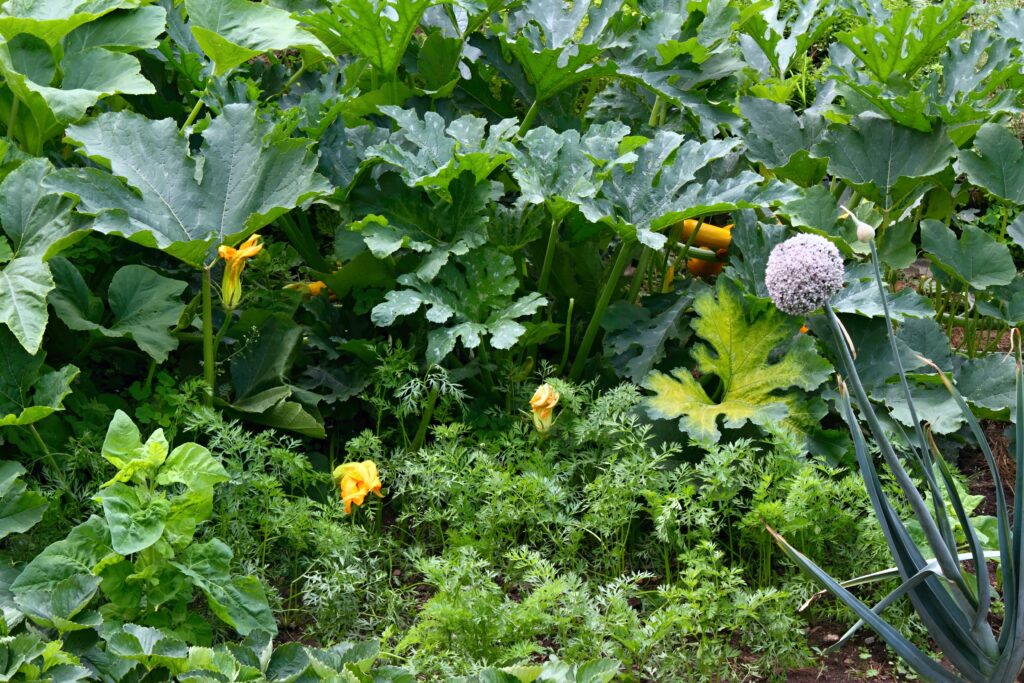
Whether you’re a seasoned green thumb or just starting out, this guide will walk you through the essentials of creating a thriving organic garden. We’ll explore biodiversity, no-till practices, permaculture, and the importance of understanding your soil.
Why Organic Gardening?
Organic gardening is more than just growing plants without chemicals; it’s about creating a sustainable ecosystem that benefits both you and the environment. By focusing on natural processes, we encourage biodiversity, improve soil health, and produce nutritious, flavorful food. This approach not only reduces your exposure to harmful pesticides but also helps mitigate climate change by sequestering carbon in the soil.
Embracing Biodiversity
Biodiversity in your garden means growing a variety of plants that support each other. This not only creates a resilient ecosystem but also attracts beneficial insects and wildlife. A diverse garden is less prone to pest outbreaks because different plants attract different beneficial insects, which can keep harmful pests in check.
Consider planting native species as they are well-adapted to your local climate and soil, requiring less maintenance and providing habitat for local wildlife. Mix flowers, vegetables, and herbs to maximize the health and productivity of your garden. Companion planting, such as pairing tomatoes with basil, can deter pests and improve growth. For example, marigolds release a scent that repels many harmful insects, making them excellent companions for various vegetables.
No-Till Gardening
No-till gardening is all about preserving soil structure and health. Tilling can disrupt the natural soil ecosystem, leading to erosion and loss of nutrients. Instead, layer organic matter like compost and mulch directly on the soil. This method mimics nature, allowing earthworms and microorganisms to thrive, enhancing soil fertility and structure.
When you avoid tilling, you help maintain the delicate network of fungal hyphae and beneficial bacteria that are essential for plant health. These microorganisms help break down organic matter, making nutrients available to plants. Mulching with organic materials such as straw, leaves, or grass clippings helps retain moisture, suppress weeds, and gradually adds nutrients to the soil as it decomposes.
Permaculture Principles
Permaculture is a holistic approach to gardening that focuses on working with nature, not against it. This includes designing your garden to capture and conserve water, using natural materials for building garden beds, and creating habitats for beneficial insects. The goal is to create a self-sustaining system that requires minimal intervention.
Start by observing your garden site and understanding its microclimates. Place water-loving plants in lower areas where water naturally collects and drought-tolerant plants in higher, drier spots. Use swales, berms, and rain gardens to manage water flow and prevent erosion. Incorporate elements like compost bins, chicken coops, and beehives to recycle nutrients and support diverse life forms.
Understanding and Working with Your Soil
Your soil is the foundation of your garden. Healthy soil is teeming with life and rich in organic matter. Conduct a soil test to understand its composition and pH level. Add compost and other organic amendments to improve soil health. Remember, healthy soil leads to healthy plants.
Soil testing can reveal deficiencies in nutrients such as nitrogen, phosphorus, and potassium, allowing you to amend your soil appropriately. Compost adds organic matter, improving soil structure, water retention, and nutrient availability. Consider using green manures or cover crops like clover or vetch to fix nitrogen in the soil and prevent erosion during the off-season.
When to Pull Weeds and When to Learn from Them
Weeds can be a gardener’s nemesis, but they also provide valuable insights. Certain weeds can indicate soil conditions, such as compacted or nutrient-deficient soil. For instance, dandelions often thrive in compacted soil. Instead of immediately pulling weeds, observe and learn what they’re telling you about your garden. Use this information to adjust your soil management practices.
Weeds like clover can indicate low nitrogen levels, while others, like dock, may suggest poor drainage. Learning to identify and interpret weeds can help you make informed decisions about soil amendments and garden management. In some cases, leaving certain weeds can benefit the garden by providing ground cover, reducing erosion, and adding organic matter as they decompose.
Steps to Start Your Organic Garden
- Plan Your Garden: Choose a sunny location and decide what plants you want to grow. Consider companion planting and biodiversity. Draw a garden layout to visualize plant placement and ensure proper spacing.
- Prepare the Soil: Test your soil, add compost, and avoid tilling. Use mulch to protect and nourish the soil. Consider creating raised beds to improve drainage and soil quality, especially if your native soil is poor.
- Plant Your Garden: Follow permaculture principles, plant a variety of species, and space them appropriately. Start with hardy plants that are easier to grow and gradually introduce more challenging species as you gain experience.
- Maintain Your Garden: Water wisely, mulch to retain moisture, and regularly check for pests. Use natural pest control methods and learn from the weeds. Rotate crops each season to prevent soil depletion and reduce pest buildup.
- Harvest and Enjoy: Enjoy the fruits (and vegetables ;-)) of your labor. Share with friends and family, and save seeds for the next planting season. Keep a garden journal to track your successes and learn from challenges.
Conclusion
Organic gardening is a journey of discovery and connection with nature. By focusing on biodiversity, no-till practices, permaculture, and understanding your soil, you can create a thriving, sustainable garden. Remember, gardening is not just about the end product, but the joy and learning that come with nurturing your plants. Happy gardening!
